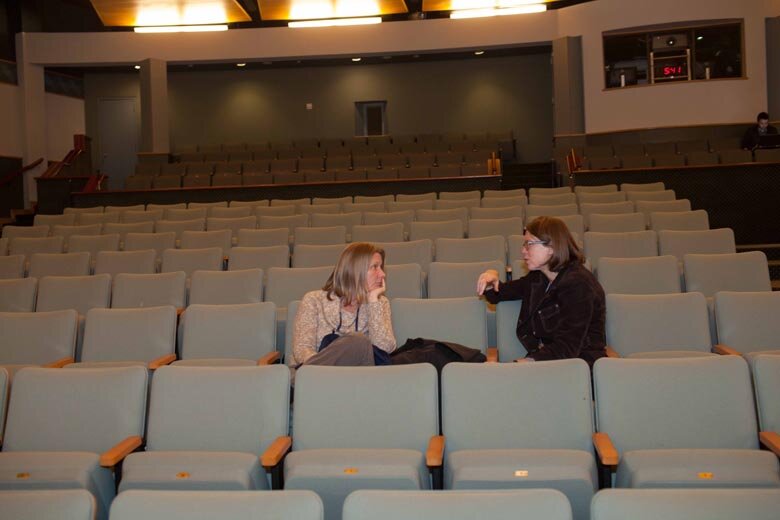Matthew Stanton, center, during an oral session coffee break at the 2017 RNA & Oligonucleotide Therapeutics meeting.
Nucleic Acid Therapies was among the first meetings to kick off our 2021 program of virtual meetings, and it marked the first year it was organized under this name. For six iterations dating back to 2010, it was known as the CSHL ‘RNA & Oligonucleotide Therapeutics’ meeting. The renaming, as Matthew Stanton (Chief Scientific Officer at Generation Bio and meeting co-organizer) explains below, was done to better reflect the ever-evolving field. The scope of the 2021 meeting was broadened to ensure advancements in the field were captured.
Matt first participated in the 2017 RNA & Oligonucleotide Therapeutics meeting before joining its team of organizers in 2019. He returned as co-organizer for this year’s virtual meeting and the inaugural program under the new ‘Nucleic Acid Therapies’ name, and he’ll be back as co-organizer in 2023. We reached out to Matt to chat about this year’s meeting, the name change, and the virtual format.
Your meeting was renamed this year. Could you share the reason? Is it because the field has evolved over the past decade? Did the renaming change the meeting in any way?
You’re correct to note that the field is ever evolving so we wanted to broaden the scope a bit. There are two technical considerations that are somewhat unifying in this space: solutions to deliver nucleic acids and resolving challenges of innate immune stimulation. Those challenges exist regardless of whether or not the nucleic acid is a small RNA oligo, a large messenger RNA or even a DNA. Recently, we’ve expanded the topics covered at the meeting to include gene editing and mRNA vaccines, and we anticipate potentially layering in non-viral gene therapy as that field evolves.






Are there other meetings similar to Nucleic Acid Therapies? If so, what sets this meeting apart from those meetings?
I think the annual Oligonucleotide Therapeutics Society meeting is most similar in content. What differentiates the CSHL meeting is the setting first and foremost: This meeting is unique in attracting senior PIs through to students just starting their careers. It’s a small, intimate setting, and the informal, non-presentation interactions are what I have found to be the most satisfying. Staying on campus really makes for a wonderful experience, and I can’t wait to get back on campus in 2023!
Speaking of participants, who else would benefit from attending this meeting, and why?
This meeting does a great job of covering what is most timely, with particular attention to data quality and interpretation, so anyone working in the field can benefit -- both academics and industry scientists.
Thinking back on your 2017 and 2019 attendance at this meeting, what is your favorite memory of it?
The presentation Adrian Krainer gave in 2017 on Spinraza after its approval and how inspirational that was.
It’s safe to say that we all prefer in-person meetings but was there an aspect of the virtual format that you liked? Did the virtual format enhance any portion(s) of the meeting?
I thought the virtual format allowed many more participants from across the globe to join the meeting that normally would not be able to attend in person. I also wonder if the Q&A format of the virtual meeting—submitting questions via chat feature of Zoom--lowers the barrier to asking and results in more questions from those who are not “the usual suspects”.
In the Q&A portion of oral sessions at our virtual meetings, participants submit questions via the Zoom Chat feature along with their career level and institution. The ‘barrier’, as Matt said, is lower than asking questions in a large auditorium that may be filled with senior scientists and luminaries. Furthermore, any questions not answered during a virtual Q&A can be discussed at our Discussion Zone, and they are also transferred to the meeting Slack channel where the dialogue continues. This format has evened the Q&A-playing field, resulting in noticeably more questions and active engagement by early-career researchers across many of our meetings.
Thank you to Matt for sharing insight into Nucleic Acid Therapies, which returns to CSHL in March 2023. For information on this meeting, be sure to regularly check here. And for cutting edge RNA research next year, be sure to check out our Regulatory RNAs meeting.




